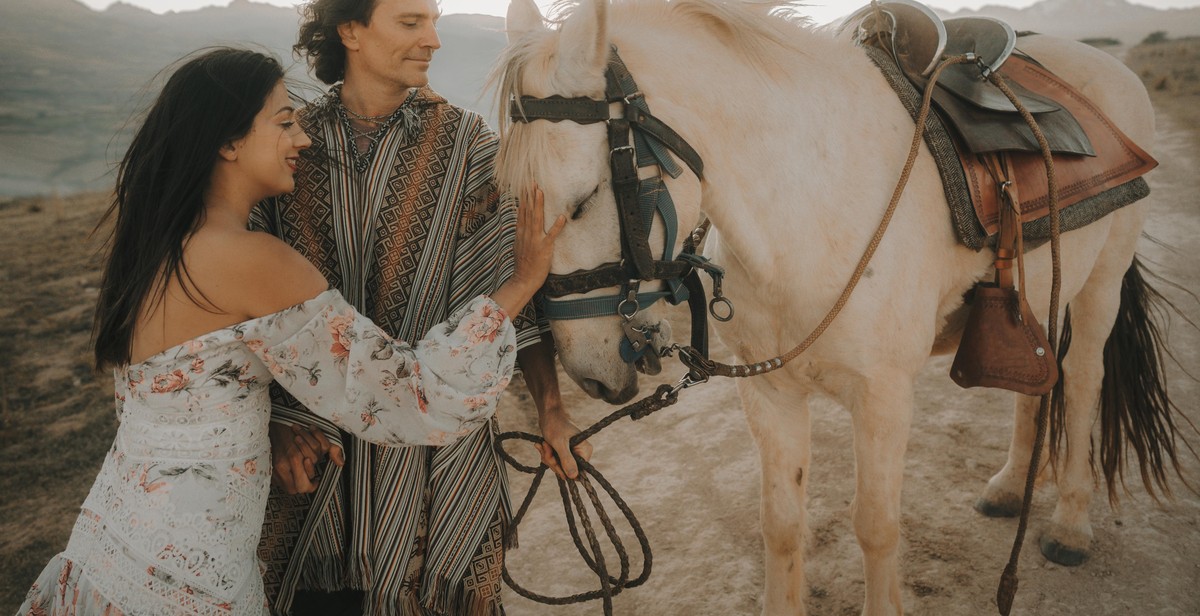How to Safely Mount and Dismount a Horse: Proper Techniques for Getting on and off a Horse
As an experienced horseback rider, I understand the importance of proper technique when it comes to mounting and dismounting a horse. Safety should always be the top priority when interacting with these majestic animals, and that starts with knowing the right way to get on and off a horse.
In this article, I will share my personal experience and expertise on the topic, including step-by-step instructions and tips for ensuring a safe and successful mount and dismount. Whether you’re a beginner rider or a seasoned equestrian, these techniques are essential for preventing accidents and injuries.
The Importance of Proper Technique
Mounting and dismounting a horse may seem like simple tasks, but they can actually be quite dangerous if not done correctly. Improper technique can lead to falls, injuries, and even horseback riding accidents. By following the proper techniques, you can reduce the risk of accidents and ensure a safe and enjoyable ride.
Step-by-Step Instructions for Mounting a Horse
- Approach the horse from the left side, holding the reins in your left hand and the stirrup in your right hand.
- Place your left foot in the stirrup and use your right hand to steady the saddle.
- Push off with your right foot and swing your right leg over the horse.
- Lower yourself gently onto the saddle, keeping your weight centered and your heels down.
Step-by-Step Instructions for Dismounting a Horse
- Bring the horse to a stop and gather the reins in your left hand.
- Remove your feet from the stirrups.
- Shift your weight to your left foot and swing your right leg over the horse.
- Lower yourself gently to the ground, keeping your weight centered and your knees slightly bent.
By following these techniques for mounting and dismounting a horse, you can ensure a safe and enjoyable ride every time.

The Importance of Proper Mounting and Dismounting Techniques
Proper mounting and dismounting techniques are crucial for both the rider and the horse’s safety. Using improper techniques can cause discomfort and pain to the horse, lead to injuries to both the rider and the horse, and can damage the saddle and other equipment.
Protecting the Horse
Mounting and dismounting can be stressful for horses, especially if they are inexperienced or have had bad experiences in the past. Using proper techniques can help alleviate some of this stress and prevent discomfort or pain. When mounting, it’s important to ensure that the saddle is centered and that the girth is tightened properly. Failing to do so can cause the saddle to shift, which can be uncomfortable for the horse and even cause back pain or sores. When dismounting, it’s important to do so slowly and gently to avoid jarring the horse’s back and causing pain or discomfort.
Preventing Injuries
Using proper mounting and dismounting techniques can also prevent injuries to both the rider and the horse. When mounting, it’s important to use a mounting block or a stirrup to avoid putting unnecessary pressure on the horse’s back. Failing to do so can cause the horse to shift or move, which can lead to the rider falling and sustaining an injury. When dismounting, it’s important to ensure that the horse is standing still and that the rider dismounts on the correct side. Dismounting on the wrong side can cause the rider to fall and sustain an injury.
Protecting Equipment
Using proper mounting and dismounting techniques can also protect the saddle, stirrups, and other equipment from damage. Failing to center the saddle or tighten the girth properly can cause the saddle to shift, which can damage the saddle and other equipment. When dismounting, it’s important to avoid jumping off the horse or dropping the stirrups, as this can cause damage to the stirrup irons and leather.
Overall, using proper mounting and dismounting techniques is essential for the safety and comfort of both the rider and the horse, as well as for the protection of equipment. By taking the time to learn and practice these techniques, riders can ensure a safe and enjoyable riding experience for themselves and their horses.

Preparing Yourself and Your Horse
Before mounting your horse, there are a few things you should do to ensure a safe and enjoyable ride. These include:
Wear Appropriate Clothing
Wearing the right clothing is essential when riding a horse. You should wear comfortable, fitted clothing that allows for ease of movement, such as riding pants or jeans and a close-fitting top. It is also important to wear a helmet to protect your head in case of a fall. Additionally, wear boots with a low heel to prevent your foot from slipping out of the stirrup.
Check Your Equipment
Before mounting your horse, check your equipment to ensure that everything is in good working order. Check your saddle, girth, stirrups, and reins for any signs of wear or damage. Make sure that your saddle is properly fitted to your horse and that the girth is snug but not too tight. Also, make sure that your stirrups are adjusted to the correct length.
Prepare Your Horse
Preparing your horse before mounting is crucial to ensure a safe ride. Begin by grooming your horse thoroughly, paying special attention to the areas where the saddle and bridle will rest. Check your horse’s hooves for any signs of injury or discomfort. If your horse is not used to being ridden, take the time to desensitize them to the saddle and bridle before attempting to mount.
- Check your horse’s hooves for any signs of injury or discomfort.
- Groom your horse thoroughly, paying special attention to the areas where the saddle and bridle will rest.
- Desensitize your horse to the saddle and bridle if they are not used to being ridden.
By taking the time to prepare yourself and your horse before mounting, you can ensure a safe and enjoyable ride. Remember to always prioritize safety and never take unnecessary risks when riding.

Mounting Your Horse
Mounting a horse may seem like a simple task, but it requires proper technique to ensure your safety and your horse’s comfort. Here is how to safely mount a horse:
Approach your horse
Approach your horse calmly from the left side, speaking to them in a soothing tone. Stand close to your horse’s shoulder and hold the reins securely in your left hand.
Place your left foot in the stirrup
Place your left foot in the stirrup, making sure that it is securely placed. Use your right hand to hold onto the front of the saddle to maintain balance.
Swing your right leg over the horse
Swing your right leg over the horse’s hindquarters, keeping your weight balanced over your left foot. As you swing your leg over, keep your right hand on the saddle to maintain balance.
Settle into the saddle
Once you have swung your leg over, settle into the saddle gently. Make sure that both stirrups are even and that you are sitting comfortably in the saddle. Adjust your reins and stirrups as necessary before starting to ride.
- Approach your horse calmly from the left side
- Place your left foot in the stirrup
- Swing your right leg over the horse
- Settle into the saddle
Remember to always mount your horse carefully and calmly to ensure a safe and comfortable ride for both you and your horse.

Riding Your Horse
Now that you have safely mounted your horse, it’s time to start riding. Riding a horse can be a thrilling experience, but it’s important to remember to maintain proper posture to avoid discomfort and injury.
Maintain Proper Posture
When riding your horse, sit up straight with your shoulders back and your heels down. Keep your feet in the stirrups and your knees bent. This will help you maintain balance and control while riding.
Use Proper Rein and Leg Cues
To communicate with your horse, use proper rein and leg cues. Pulling on the reins will signal your horse to slow down or stop, while releasing the reins will signal your horse to move forward. Use your legs to guide your horse in the direction you want to go.
Stay Alert and Aware of Your Surroundings
While riding your horse, it’s important to stay alert and aware of your surroundings. Keep an eye out for any potential hazards, such as uneven terrain or other animals. If you see something that could spook your horse, calmly redirect their attention and continue on your ride.
- Maintain proper posture
- Use proper rein and leg cues
- Stay alert and aware of your surroundings
By following these tips, you’ll be able to safely and confidently ride your horse. Remember to always prioritize your safety and the safety of your horse.

Dismounting Your Horse
When it’s time to dismount your horse, always remember to stop your horse before attempting to get off. Follow these steps to safely dismount your horse:
- Remove both feet from the stirrups.
- Shift your weight to your left foot and swing your right leg over the horse’s hindquarters.
- Gently touch the ground with your left foot and slide down. Keep your left hand on the reins and use your right hand to push off the horse’s back.
- Once you’re safely on the ground, turn to face your horse and gather the reins in both hands.
It’s important to note that you should never jump off your horse or dismount too quickly, as this can startle your horse and potentially cause injury. Always dismount slowly and carefully, keeping a firm grip on the reins to maintain control of your horse.
If you’re having trouble dismounting or feel unsure about the process, don’t hesitate to ask your instructor or a more experienced rider for assistance. Remember, safety should always be your top priority when working with horses.

Conclusion
Learning how to safely mount and dismount a horse is an essential skill for any rider, whether you are a beginner or an experienced equestrian. The proper techniques for getting on and off a horse not only ensure your safety but also help to prevent any injuries to your horse.
Remember to always approach your horse calmly and confidently, and to use the correct equipment such as a mounting block or stirrup. When mounting, keep your weight close to the horse’s body and avoid bouncing or pulling on the reins. When dismounting, make sure to release your feet from the stirrups and slide down gently.
It’s important to practice these techniques regularly to ensure that you are comfortable and confident when mounting and dismounting your horse. By following these simple steps, you can ensure a safe and enjoyable riding experience for both you and your horse.
- Approach your horse calmly and confidently
- Use the correct equipment such as a mounting block or stirrup
- Keep your weight close to the horse’s body when mounting
- Avoid bouncing or pulling on the reins when mounting
- Release your feet from the stirrups and slide down gently when dismounting
- Practice regularly to ensure comfort and confidence
Remember to always prioritize your safety and the safety of your horse when riding. By following these proper techniques for mounting and dismounting, you can ensure a safe and enjoyable experience for both you and your equine partner.
